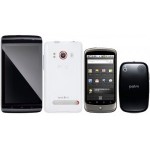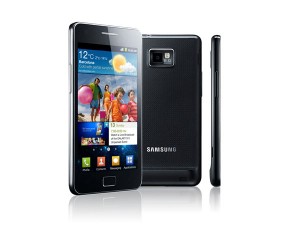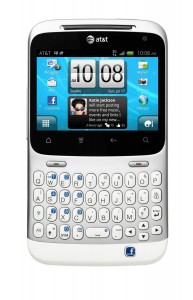Smartphone Screen Sizes: A Growing Trend
 Back in 2007 when the original iPhone was released, its 3.5-inch display was considered fairly monstrous for a phone. At the time, most smartphone displays were well under 3 inches, and only a few spanned the entire face of the phone, the rest opting for a BlackBerry half screen/half button approach. But larger screens caught on, and today the 3.5-inch display of the iPhone seems relatively small, compared to 4.3 and even 5-inch phones.
Back in 2007 when the original iPhone was released, its 3.5-inch display was considered fairly monstrous for a phone. At the time, most smartphone displays were well under 3 inches, and only a few spanned the entire face of the phone, the rest opting for a BlackBerry half screen/half button approach. But larger screens caught on, and today the 3.5-inch display of the iPhone seems relatively small, compared to 4.3 and even 5-inch phones.
The Bigger the Better?
The race to the biggest screens is almost entirely a marketing tool. Today’s smartphones really are just miniaturized computers, with a processor and RAM, but many consumers don’t know to look for this information; moreover, in the case of smartphones, processor and memory specs are hardly ever even listed!
Smartphone manufacturers know that the screen is one of the first things a buyer sees when looking for a new phone, and if you’ve ever been shopping for an HDTV, you’ll know that in the showroom, the bigger screens always stand out. That’s exactly why manufacturers have started producing bigger and bigger smartphones. Screen sizes are also numbers that advertise well because people can actually relate to them. 1GHz, 1.5GHz, dual-core, these terms only mean anything to those who are already familiar with the technology and likely already know what they want to buy. Everyone knows what an inch is, and that a 4-inch screen sounds better than a 3.5-inch screen.
But are these glassy pixel monstrosities really a step in the right direction? Sure, as long as the phones themselves aren’t getting too big. Back to that HDTV analogy, once you’ve bought one and brought it back home, you realize just how huge it is once all of the larger TVs aren’t around to skew your perspective. The same thing is happening with smartphones: people are buying the larger screens only to realize down the line that they’re too bulky to be practical. So what smartphone display size is right for you?
Screens Under 3.5 Inches
There are a lot of smartphones with 2.8 to 3.2-inch displays. These are generally entry-level devices, intended to be affordable but still functional. These are great for the younger crowd, such as teenagers, who might be more prone to losing or breaking a phone and have the younger eyes to see the smaller screen.
Smartphones with portrait style keyboards also have screens of this size. These are aimed at the business professional crowd who will be primarily using it for things like text messages, emails, and documents.
Screens 3.5 to 4.3 Inches
 This is currently the sweet spot in terms of screen visibility and overall package size. The 3.5-inch devices are typically in the mid-range scale. Their performance can vary from very moderate, like the Huawei Ideos X5, to high-end, like the iPhone 4.
This is currently the sweet spot in terms of screen visibility and overall package size. The 3.5-inch devices are typically in the mid-range scale. Their performance can vary from very moderate, like the Huawei Ideos X5, to high-end, like the iPhone 4.
For things like multimedia and especially web browsing, the 3.5-inch screens can be a bit cramped. This is where 4-inch displays shine. The overall sizes of the phones are generally close to the same as the 3.5-inchers but extra screen space is a noticeable improvement. It’s for this reason that the iPhone 5 (or iPhone 4S) is expected to have a ~4 inch display.
 In the 4.3-inch range, you have some of the true powerhouse phones, like the Galaxy S II and Sensation 4G. They’re starting to get a bit bulky but will still fit into most pockets.
In the 4.3-inch range, you have some of the true powerhouse phones, like the Galaxy S II and Sensation 4G. They’re starting to get a bit bulky but will still fit into most pockets.
Screens Over 4.3 Inches
There have been a few phones with screens over 4.3 inches. The Dell Streak was among the first, sporting a giant 5-inch display, blurring the line between smartphone and tablet. This was just too large to fit easily into a pocket – even purses had trouble.
4.5-inch screens are still quite large but much more manageable. Phones like the Samsung Infuse and the AT&T and T-Mobile variants of the Galaxy S II have 4.5-inch displays. They’ll still fit in a pocket, much thanks to their thinness, but be sure to consider just how big they are before buying them.



